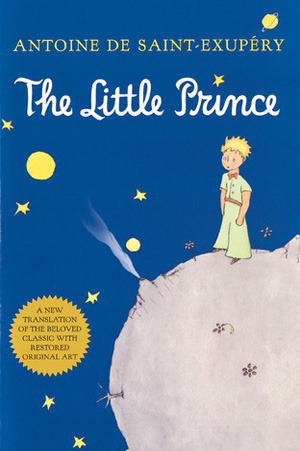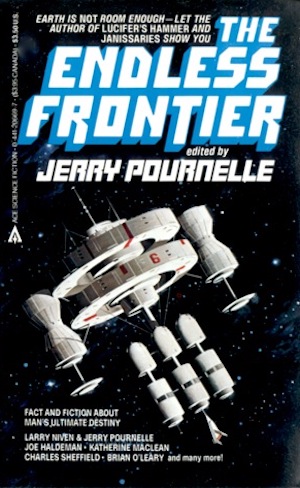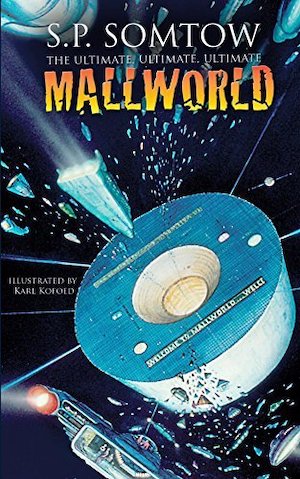Readers of James S.A. Corey’s Expanse series will be more than familiar with the Belters, who begin as plucky, oppressed victims of Mars, Earth, and the great corporations before liberating themselves and using their new-status as wisely and prudently as those who came before them. (In case it’s not clear, I’m being sarcastic.) Corey’s Belters are among the latest in a long tradition of independently-minded Belters, seeking freedom and prosperity in the Solar System’s asteroid belt, that stream of planetary leftovers found principally (but not entirely) between Jupiter and Mars.
It is no surprise that the Belt and Belters are such a popular conceit. Given the tendency of authors to favour worlds that are apparently the size of Hollywood backlots, the appeal of thousands of actual bodies the size of Hollywood backlots within comparatively easy reach of each other is obvious. Thus, the challenge here is to winnow the list down to only five vintage stories from the subgenre…
The Little Prince by Antoine de Saint-Exupéry (1943)

Published the year before Free French aviator Saint-Exupéry perished in the long struggle to liberate occupied Europe from the Fascists, The Little Prince focuses on an encounter in the Sahara between a stranded aviator and a young boy. The boy is an extraterrestrial, hailing from asteroid B 612. He relates to the aviator his journeys across an asteroid belt uninhibited by astronomic plausibility. They do not cast a favourable light on humans.
It may be that writing when one’s homeland is either occupied by Nazis or in the grip of quislings does not incline one to sunny optimism. Antoine de Saint-Exupéry’s fable is a melancholy one, memorable enough to have retained its audience over the decades.
“The Lake of the Gone Forever” by Leigh Brackett (1949)

Convinced he will succeed where his father failed, Rand Conway mounts an expedition to mysterious Iskar, deep in the asteroid belt. A fortune is hidden on Iskar. Conway is certain he knows how to retrieve it. Conway discovers he is not nearly as well informed about the treasure as he believes he is. This occurs too late to avoid the consequences of finding it.
Older stories often sprinkle domestic abuse throughout the narrative. Brackett’s tale enthusiastically embraces this tradition while making it clear that the abuse is, in fact, abuse and a bad thing. So, yay? Readers may prefer to dwell instead on Brackett’s vibrant worldbuilding.
“Tinker” by Jerry Pournelle (1975)

Independent spacer Kephart is an oddity, spacecraft usually being far too expensive for personal ownership. His unusual status makes him a perfect catspaw for Jefferson, an impoverished asteroid community determined to achieve prosperity no matter the cost to others. The rock rats easily outmaneuver Kephart. Insurance adjuster Oswald Dalquist will be another matter.
“Tinker” comes from an early Pournelle future history. It’s notable for presenting company towns as good and beneficial institutions, where almost any prudent person should want to live. The exception is the brain trust on Jefferson, a trust that will no doubt learn why it’s a bad idea to earn the undivided attention of large companies whose power is limited only by their own good nature.
“The Gambling Hell and the Sinful Girl” by Katherine MacLean (1975)

Having preserved her children from the temptations of the sinful world, pious Ma is extremely reluctant to see her lanky son Abe leave their cramped space habitat for work elsewhere in the asteroid belt. Her worst fears appear realized when Abe returns with dancing girl Sylvia Saint Clair in tow. Ma soon realizes a good Christian woman like herself should look past Sylvia’s career dancing and “other things.” The problem is that the men from the gambling hell from which Abe had rescued Sylvia. They not only refuse to overlook Sylvia’s past; they are determined to drag her back to dancing and “other things.”
This may be the most cheerful, upbeat SF story about sex-trafficking victims that I’ve ever encountered. It helps that the entire affair is narrated by one of Abe’s many younger siblings, a naïve kid who can relate events but cannot understand the unsavory implications of some adult conversations.
“A Day in Mallworld” by S. P. Somtow (1979)

Humanity was measured and found wanting by the Selespridar, who prudently tipped the Sun and its Solar System into a nearby empty universe. Cosmic quarantine is a depressing prospect. The sweetener: the Mallworld, a vast, delightful display of humanity’s consumerist prowess. For one teen, Mallworld promises not merely delicious commercial excess, but a chance to escape humanity’s prison.
A Day in Mallworld was part of an entire cycle of generally humorous stories featuring the Mallworld. There are enough to fill a book (specifically, one titled Mallworld). No doubt there would be even more if, as so many promising SFF authors have done before him, Somtow had not decided to focus on opera. Curse you, tempting symphonic arrangements, seductive arias, and global fame! Stop stealing authors from science fiction, fantasy, and horror!
***
These five are only the tiniest sample of a very large subgenre. The list above does not even touch on recent examples, almost as though I intend to return to this subject at some future time… No doubt I overlooked worthy vintage candidates. Feel free to make a case for your favourites in comments, which are, as ever, below.
In the words of fanfiction author Musty181, four-time Hugo finalist, prolific book reviewer, and perennial Darwin Award nominee James Davis Nicoll “looks like a default mii with glasses.” His work has appeared in Interzone, Publishers Weekly and Romantic Times as well as on his own websites, James Nicoll Reviews (where he is assisted by editor Karen Lofstrom and web person Adrienne L. Travis) and the 2021 and 2022 Aurora Award finalist Young People Read Old SFF (where he is assisted by web person Adrienne L. Travis). His Patreon can be found here.










